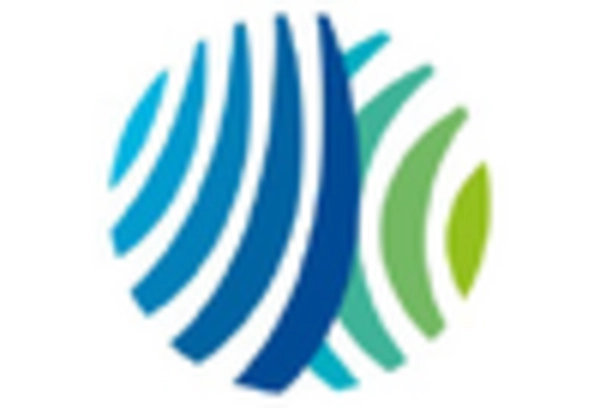Advancements in Data Analytics
The rapid advancements in data analytics are reshaping the landscape of the Occupancy Tracking Market. Enhanced analytical capabilities allow organizations to derive actionable insights from occupancy data, leading to improved decision-making processes. The integration of artificial intelligence and machine learning into occupancy tracking systems enables predictive analytics, which can forecast space utilization trends. This is particularly beneficial for facility managers seeking to optimize resource allocation. Market data indicates that The Occupancy Tracking is anticipated to grow to USD 274 billion by 2022, suggesting a strong correlation with the growth of the Occupancy Tracking Market. As organizations increasingly rely on data-driven strategies, the demand for sophisticated occupancy tracking solutions is likely to escalate.
Rising Demand for Smart Buildings
The increasing trend towards smart buildings is a pivotal driver for the Occupancy Tracking Market. As urbanization accelerates, the need for efficient space utilization becomes paramount. Smart buildings leverage advanced technologies, including occupancy tracking systems, to optimize energy consumption and enhance operational efficiency. According to recent data, the smart building market is projected to reach USD 1 trillion by 2025, indicating a robust growth trajectory. This surge is likely to propel the adoption of occupancy tracking solutions, as they provide critical insights into space usage patterns. Consequently, stakeholders in the Occupancy Tracking Market are focusing on integrating these technologies to meet the evolving demands of modern infrastructure.
Increased Focus on Workplace Safety
Workplace safety has emerged as a crucial concern for organizations, significantly influencing the Occupancy Tracking Market. The implementation of occupancy tracking systems aids in monitoring space utilization, ensuring compliance with safety regulations. This is particularly relevant in environments where social distancing and crowd management are essential. Data suggests that companies investing in safety technologies are likely to see a 20% reduction in workplace incidents. As organizations prioritize employee well-being, the demand for occupancy tracking solutions that enhance safety protocols is expected to rise. This trend not only fosters a safer work environment but also drives innovation within the Occupancy Tracking Market.
Government Regulations and Standards
Government regulations and standards play a significant role in shaping the Occupancy Tracking Market. Many regions are implementing stringent building codes and occupancy regulations aimed at enhancing energy efficiency and safety. Compliance with these regulations often necessitates the adoption of occupancy tracking technologies. For instance, energy efficiency mandates may require real-time monitoring of space utilization to optimize HVAC systems. As a result, organizations are compelled to invest in occupancy tracking solutions to meet regulatory requirements. This trend not only drives market growth but also encourages innovation within the Occupancy Tracking Market, as companies seek to develop compliant and efficient tracking systems.
Growing Interest in Energy Management Solutions
The increasing interest in energy management solutions is a key driver for the Occupancy Tracking Market. Organizations are increasingly recognizing the importance of energy efficiency in reducing operational costs and minimizing environmental impact. Occupancy tracking systems provide valuable data that can be utilized to optimize energy consumption in real-time. For example, by analyzing occupancy patterns, organizations can adjust lighting and HVAC systems accordingly, leading to substantial energy savings. Market Research Future indicates that energy management systems are expected to grow at a CAGR of 15% over the next five years. This growth trajectory suggests a corresponding rise in the demand for occupancy tracking solutions, as they are integral to effective energy management strategies.
















Leave a Comment